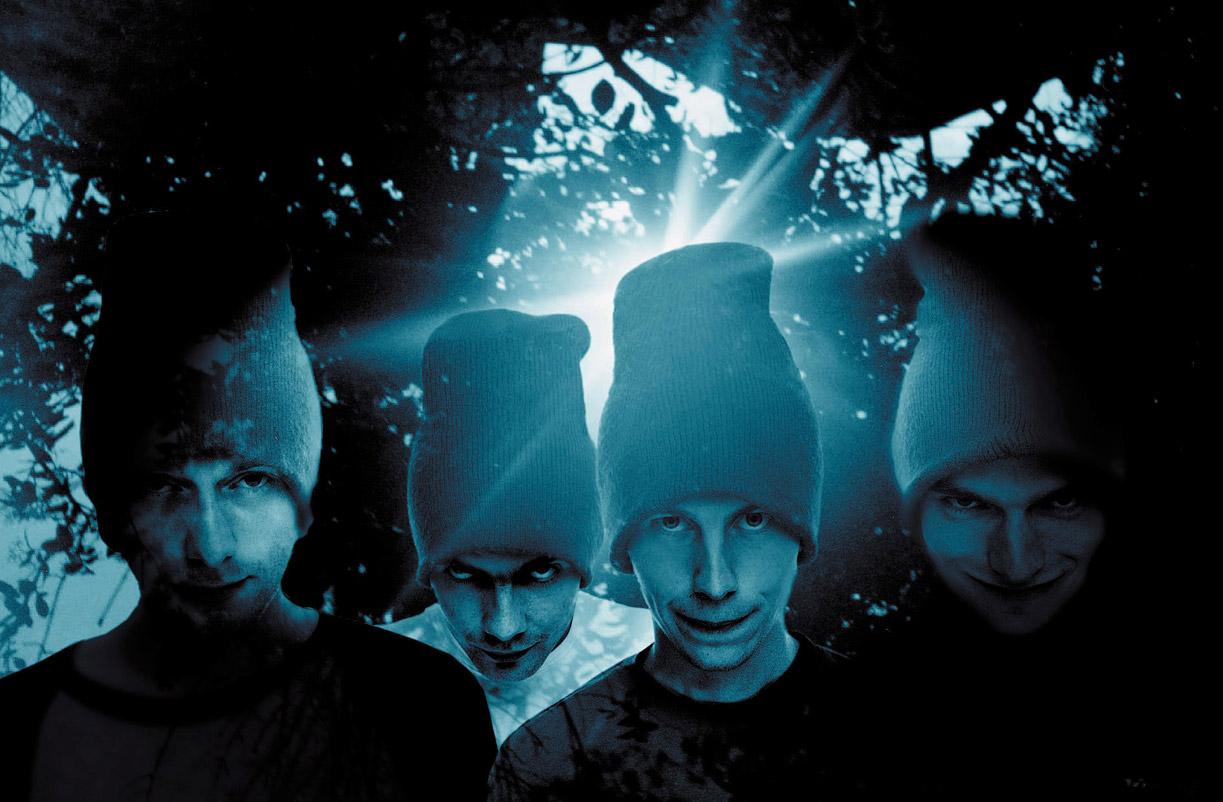Few bands could live up to the tense expectation presented by such an austere and otherworldly scene, but this is the forté of Sigur Rós, the most innovative and off-beat act to come out of Iceland since the Sugarcubes in 1986.
Sigur Rós doesn’t usually play shows in damp, concrete shells smelling of century-old herring or on rolling hilltops surrounded by bonfires. But during the summer of 2006, the melodic four-piece group set out for a host of locations like these with a film crew in tow to make Heima (Home), a feature-length documentary of an unconventional tour across their homeland.
Hoping to make the antidote to the cliché rockumentary, the band members—Jónsi Birgisson, Kjarri Sveinsson, Orri Dýrason, and Georg Hólm—plotted coordinates in some of the most remote areas of the country, and, with the help of friends and family, set up live shows in village squares, community centers, and even a wayward valley, which was soon to be flooded by waters flowing off a controversial dam.
“Making our own film is something we have always wanted to do,” explains Orri, the drummer who joined the band in 1999. Having provided songs for The Life Aquatic and Vanilla Sky soundtracks, Sigur Rós was already known and admired by the film world. Bassist Georg, who in 1994 founded the band along with Jónsi and original drummer Ágúst Gunnarsson, described the evolving idea for the film as born from their experience of putting on visuals while out on tour.
“In 2004, we started thinking that maybe we needed to document our live show, since we were thinking about changing it. The idea was to record just one show, one place, and release that,” he says. But in keeping with Sigur Rós’ knack for the unconventional, the idea evolved into something else.
From the beginning, they planned to film in Iceland, the magnificent geology and environment of which inspires their music and would eventually play a starring role in the movie. “We didn’t know until we started that we would start filming different shows around Iceland,” Georg recalls of the process. “We didn’t end up catching the live show, but we ended up capturing something very different.”
What they captured was a series of cozy concerts attended by everyday Icelanders of all walks of life, the majority of whom had never heard of Sigur Rós.
Initially, the film didn’t capture the magic of the tour the way they had envisioned. “We really didn’t like it,” Orri said of the first version presented to them by the original director. Depressed, the band spent a few months trying to remake it themselves but with little success. Finally, they were put in contact with Dean DeBlois, a Hollywood director who sent them several long, handwritten letters explaining his vision for the film. “He glued it all together,” says Orri. “It had some thread to it. He was a huge help for us.”
In fact, the final product displays several threads: mesmerizing sequences of Iceland’s natural wonders, often played backwards and in slow motion; bucolic scenes of the crowds assembling, complete with babies and family dogs; interviews with the band and some of the local musicians they saw on the way; and footage of the shows themselves, each one completely different than the last.
Despite the fact that many Icelanders don’t listen to Sigur Rós or any rock music, the concerts took a town-meeting feel. Everyone came out with blankets just to see what the fuss was about. “Nothing really happens in these towns and villages,” Orri explains, “so a big part of the reason it was well received was simply that there was a happening. Compared to what’s going on there normally, this was something that made people really happy.”
The film spends much time lingering on the faces of stoic Icelanders as they quizzically examine these four young men (accompanied by the women of the band Amiina on strings) as truly eerie sounds steep the air.
Almost without exception, the audience appears pleased. Sigur Rós’ music is soothing, soaring, and unique, but it’s not always easy listening. Jónsi’s voice, though subtle, can boil into something more closely resembling a scream. The dissonance that makes their sound so exciting can grate the uninitiated ear. And there is no ear less initiated to the intricacies of rock and roll than that of an elderly Icelandic woman. Take Kjarii’s grandmother, who, according to their tour diary, turned up for one of the shows but later decided to watch it on TV. After she turned it on, saw the flashing lights, and heard the feedback of her grandson’s band, she believed the TV was going to explode and promptly turned it off.
Despite the desire for entertainment, the overwhelmingly eager reception shown by audiences from Ólafsvík to Kirkjubæjarklaustur is slightly perplexing. “I don’t think Icelandic people understand it any better than people from anywhere else,” says Orri, echoing a sentiment from Georg’s description of the raging Icelandic music scene. “There is a very big music scene, but a lot of the bands are just what you would expect to find in any city.” He admits that the musicians who have made it outside of Iceland—Björk, Múm, and his own band—are unconventional. “I have no idea why,” he adds.
Fatalism, the doctrine that all events are subject to fate or inevitable predetermination, permeates Sigur Rós’ approach to music-making. The band hardly speaks when writing a song, preferring instead to improvise until it feels right. The foursome is fond of happy accidents, as Orri’s story of joining the band aptly demonstrates.
“I was rehearsing in the next room and they asked me if I wanted to play,” he recalls. “So we played for a while, and then they asked me if I wanted to be in the band. It all happened very naturally.” Their flowing, ghostly sound embodies this kind of mysticism—as though the universe has drawn a plan and they should just sit back and watch.

